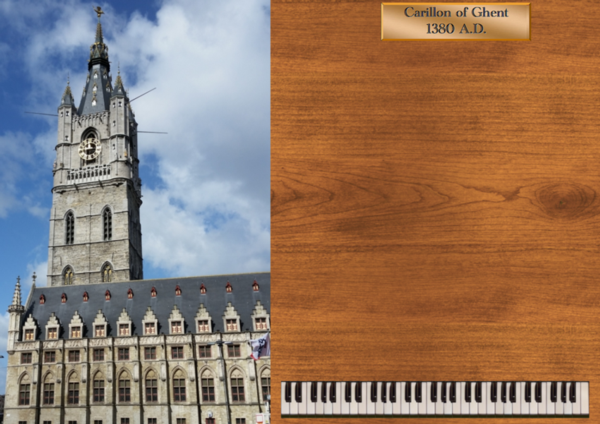Darlington & District Organists' & Choirmasters' Association
President's Event hosted by John Harvey on Saturday 25th February 2023 at 3PM
All Saints' Church, Ravensdale Road, Blackwell, Darlington DL3 8DT
Modern tonally excellent electronic organs are readily available but cost many £thousands. In this practical presentation I will outline my own
encounters with pipeless organs over the decades, and explain how to set up a practice instrument at home using free or low-cost hardware and software.
I will illustrate this with a complete console conversion project I recently completed for a local organist, and the experience of other members adapting
their home consoles to use with Hauptwerk Virtual Organ software at minimal cost. You will have the opportunity to try a number of virtual organs, from the
small Nelson at Prudhoe Methodist Church, through the 30-stop Brindley & Foster at St. Anne’s Moseley, to larger European organs including the Cavaillé-Coll
at the Madelaine in Paris, and even a harpsichord. I will also outline my current project, a redundant 4-manual Makin console that is an approximate
clone of the Durham Cathedral organ.
I volunteered to remove the enormous Makin 4-manual console from Bishop Auckland Methodist Church some time ago, since it had sat there
defunct for well over a year after it blew up and they really wanted the space to put the excellent Steinway Model B grand piano belonging to the Bishop
Auckland Music Society that was previously at South Church (it was purchased new by the Society in 2003). My intention was and is to upgrade it to the exact
current specification of the Durham Cathedral console (it turns out there are rather a lot of differences) and to make it available to a suitable location,
perhaps as a practice console for organ students. All at minimal cost of course as a hobbyist – Makin would likely charge upwards of £10K to do this
commercially, as they have recently done with another console of similar size and vintage that is now in Liverpool Anglican Cathedral, or as Phoenix Organs
did with the old Makin at Trinity Church Gosforth. I will briefly outline the project and open it to the meeting for ideas and suggestions.
All Saints has a Viscount Prestige 1 three manual electronic organ, dating from when the new church was built. The console is MIDI-enabled and also has audio
input sockets and so it is straightforward to connect up a computer and both play Hauptwerk virtual organs from the console and hear the result through the
church's large organ loudspeakers.
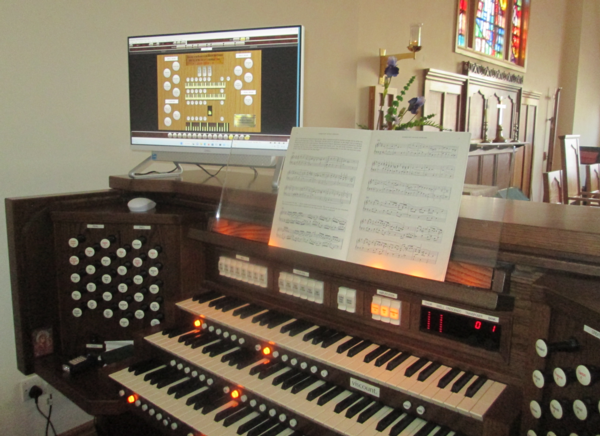
I have the following instruments installed on the computer; despite its name Hauptwerk is not restricted to organs, and I also have a harpsichord and a carillon.
With the single exception of the Madelaine they are all free. I hope members will be enthused to step up to the console and try one or more of these. Please
bring something to play!
St. Anne's Moseley (Birmingham)
The 1907 thirty stop Brindley & Foster at St. Anne's Moseley (NPOR) is included with all versions of Hauptwerk. It incorporates pipe-work from an earlier Lewis organ and has more recently
been overhauled and added to by Nicholson. The Hauptwerk version includes features not present in the real organ but easy to add in software, including
additional thumb pistons, a crescendo pedal and, like all Hauptwerk organs, a stepper system. Here is a tour of the organ by Paul Fey. The organ as sampled is
fairly dry and this demo uses a three second reverb in the Hauptwerk mixer. More info here.
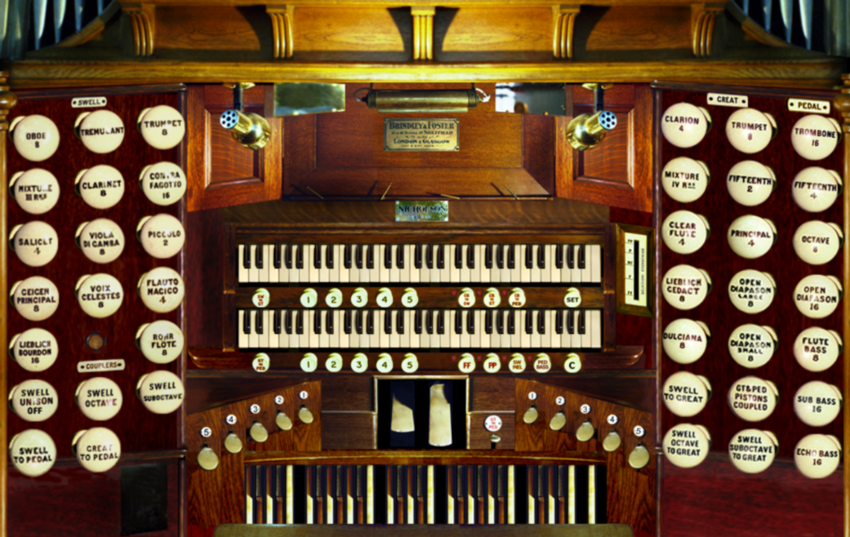
Prudhoe Methodist
A c.1927 organ by Nelson of Durham in the Methodist Church, Prudhoe. No details on NPOR, photo here.

Adriaanskerk Dreischor, Netherlands
Two manual, 18 stop tracker organ from the Adriaanskerk in Dreischor. Built by Vierdag in 1962, details here. Here is a tour of the organ by Paul Fey.
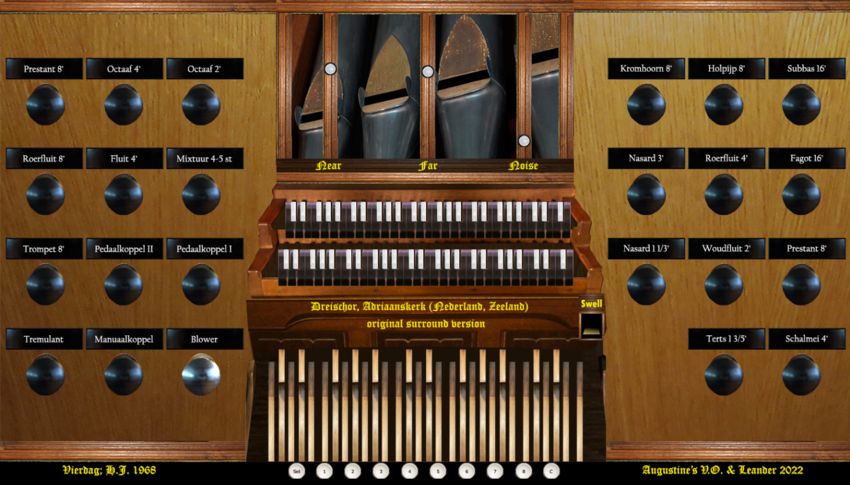
St. John Cantius, Crakow, Poland
The organ was built by Polish organ builder Jacek Siedlar from Modlnica near Cracow in 2004. The stylistic concept refers to French romanticism. It has mechanical
key action and electrical stop action. Details
here. Here is a tour of the
organ by Paul Fey.
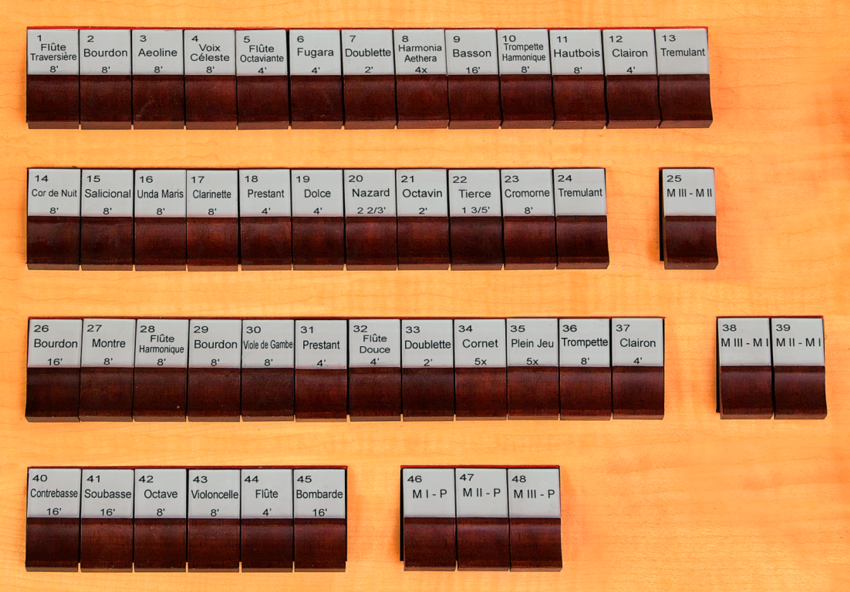
Stadtpfarrkirche St. Bartholomäus Friesach, Austria
The organ of St. Bartholomäus church in Friesach was built by Orgelbau Eisenbarth of Passau, Germany in 2000. At first the organ was built as a two manual
instrument with 38 stops, later the Solowerk was added. Details
here. Here is a tour of the
organ by Richard McVeigh, finishing with the Gigout Toccata in B minor.
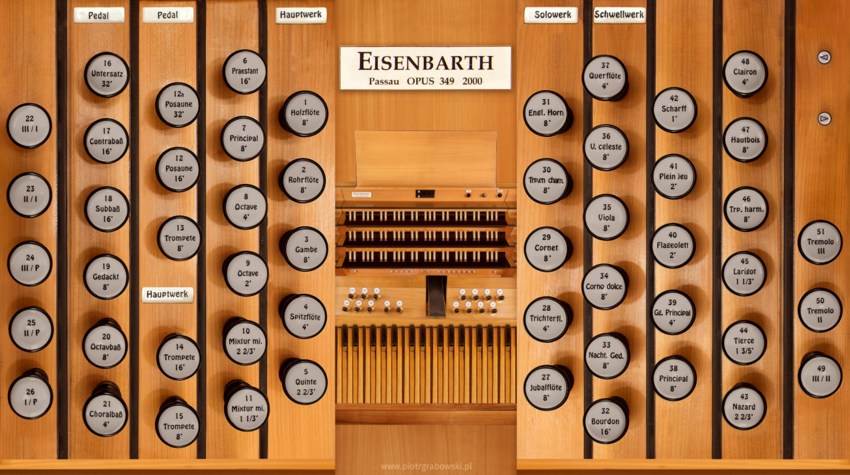
Friesach-Crakow Combination
Hauptwerk is very configurable, and it is possible to alter the default configuration of virtual organs and even, as here, to combine two organs to make a
composite 127 stop, 5 manual organ.
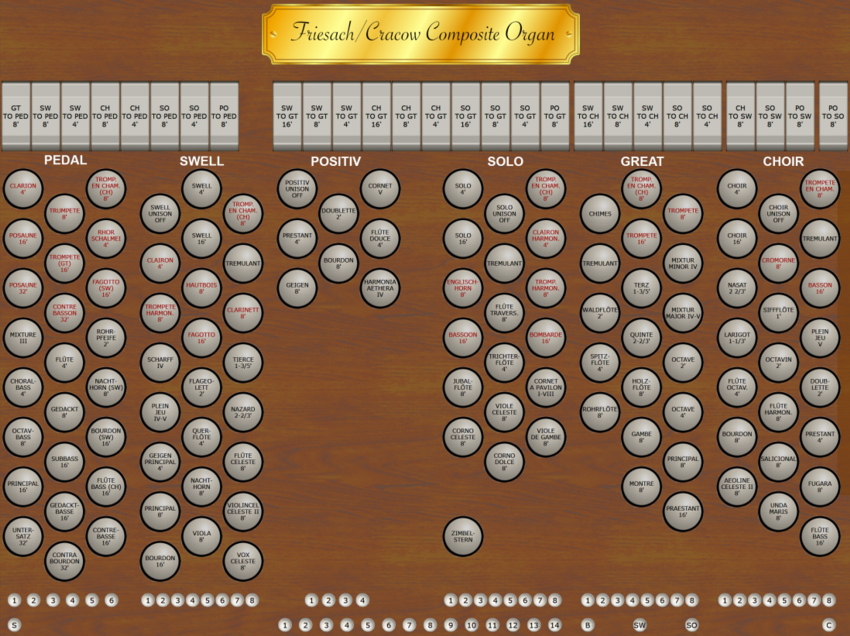
Stadtkirche Bückeburg, Germany
A mid-German baroque organ of three manuals and 47 stops, built by Rudolf Janke in the 1990s for the Stadtkirche (town church) of Bückeburg. Details and
demos
here. Here is a tour of the
organ by Paul Fey.
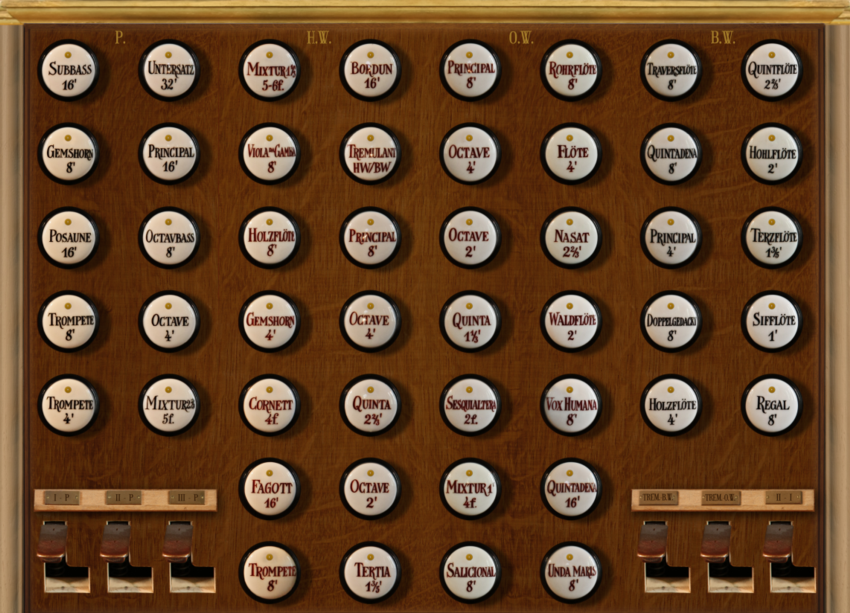
La Madelaine, Paris
This is not a complete organ but a handful of stops from the Cavaillé-Coll organ of the
Madeleine church in Paris. At €34
it is the only virtual organ sample set I have ever purchased (complete Cavaillé-Coll virtual organs can cost many £hundreds). The samples were recorded with full
room ambience during a recording session for a CD. There are foundation stops at 8' and 4/8/16' on the manuals plus 16/32' on the pedals, while the Tutti is full
organ including reeds. Details here. A small prize for anyone who can play the opening pedal solo from the César Franck Final in B-flat major, or better still the
Lefébure-Wély Sortie in E flat.
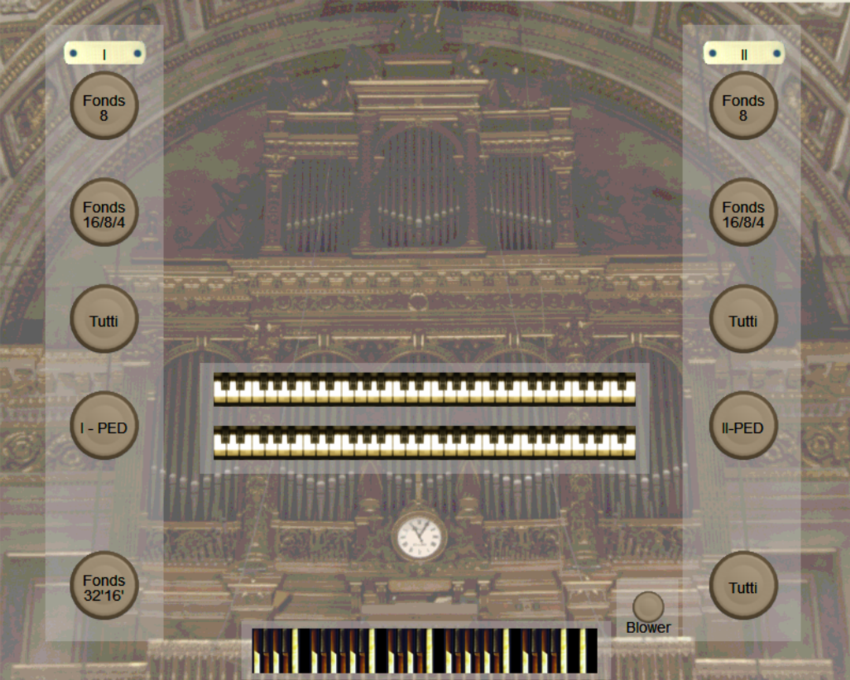
Just to show it's not all smoke and mirrors here is a short piece on the Madeleine Cavaillé-Coll foundation stops. Listen for the near seven second
reverberation of the building at the end echoing around the rafters at All Saints.
Cembalo Mietke Harpsichord
This harpsichord was built by Jan Bečička & Stanislav Hüttl & Petr Šefl, Hradec Králové, Czech Republic in 2005. It is modelled on the two-manual German
harpsichord built by Michael Mietke of Berlin in about 1710, now preserved in Charlottenburg. Details and demos here.

Ghent Carillon
This 54 bell carillon is in the Belfry of
Ghent.
